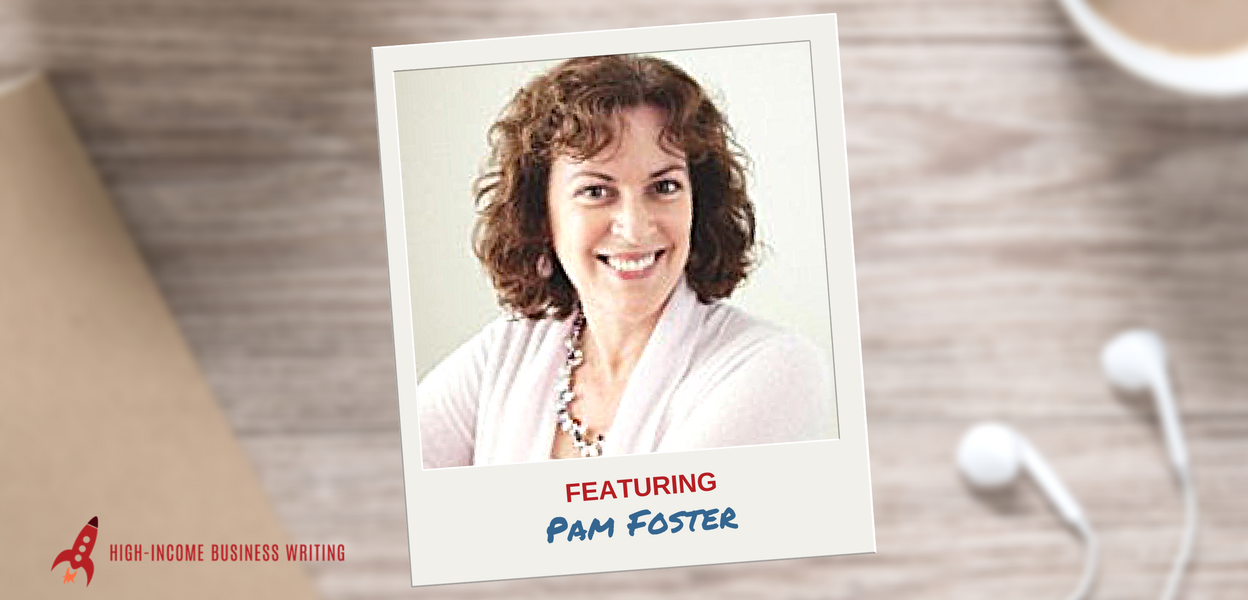Do you use a creative brief when working with clients?
Have you thought about using one but not sure what to include?
Do you even need one?
You’ll get direct answers to these important questions in this week’s show.
My guest is Pam Foster from Content Clear Marketing and Petcopywriter.com. Pam is a seasoned marketer with extensive corporate communications experience. She’s a big believer in using a creative brief when working on client projects.
In this episode she explains:
- Why you need a creative brief
- What it should contain
- How to use one when working with a client
- How to customize it for different scenarios
- How to use them to deliver more value to your clients
The notes that follow are a very basic, unedited summary of the show. There’s a lot more detail in the audio version. You can listen to the show using the audio player below. Or you can subscribe in iTunes or on Stitcher to get this show delivered straight to the Podcasts app on your smart phone, tablet or iPod.


High-Income Business Writing with Ed Gandia
#079: Should You Use a Creative Brief?
Tell us about yourself
Pam used to work in corporate marketing communications. She started working as a freelance copywriter in 2007, primarily in web copywriting. Today, she has a day job but still does freelance work on the side.
Her clients are primarily in the B2B pet industry.
What is a creative brief?
A creative brief is a questionnaire that prompts clients for information you need, such as “What’s the mission of the website?” “Who’s the audience?” and “What sets your company apart?”
A creative brief helps you (and the client) figure out the client’s unique selling proposition.
Do you alter the creative brief for subsequent projects with the same client?
It depends. Sometimes the initial creative brief gives you all the information you need. But sometimes, subsequent projects involve different divisions or product lines, so you may need to do another creative brief. You can customize the brief for each situation.
Why do you prefer a creative brief to asking questions verbally?
In the B2B world, your client shouldn’t be the only person weighing in on a copywriting project. Sales people and customer support may have valuable insights. The creative brief is a nice, formal way to get the company, not just your client, thinking about how to sell their product.
Do you encourage clients to pass the brief to other departments?
Pam asks clients to take a first pass at completing the creative brief. If Pam has questions, she’ll suggest bringing in someone else from the front lines for a new perspective.
How do you manage the process?
Pam sets a deadline and checks back on that date. If the client is struggling to complete the brief, Pam may do it for the client based on the company’s website and earlier conversations. She and the client will then review the brief and adjust as needed.
Do you create a different creative brief for every project?
Pam has one template she modifies as needed for each client. It’s a simple Word document.
What’s the next step?
Once the creative brief is complete, Pam creates a “message direction document” (also sometimes called a key message copy platform). She does this before she writes the web copy.
The message direction document contains main messages and top five benefits. She sends this document to clients for review. She uses it as a checkpoint before starting to write.
How do these documents enable you to do a better job?
Pam uses the creative brief and the message direction document as checkpoints before creating content.
Confirming direction and key messages—before you start to write—reduces the amount of edits.
It also makes the copy easier to write.
These documents are useful for keyword research. You can also use them as a springboard for blog posts, white papers, case studies and other content.
A message direction document is a great way to deliver value to clients sooner. It takes time to create copy. A message direction document is a nice way to give them a deliverable well before the copy is done.
Often, clients become re-energized about their business and products when they work on the creative brief.
What if clients have their own creative brief they want to use?
It’s great when that happens! It saves time and means they’ve bought into the process. If Pam has additional questions, she’ll add them to the brief.
Tell us about your AWAI training program on web copywriting
Pam’s training program is called Working Effectively with Web Clients. It includes a creative brief and walks you through the process of completing it.
Through June 30, 2015, you can save $50 on this program when you enter coupon code JUNESAVE50 at checkout.
Where can people learn more about you?
Pam’s websites: Content Clear Marketing and Petcopywriter.com.
You can also find Pam on LinkedIn.






